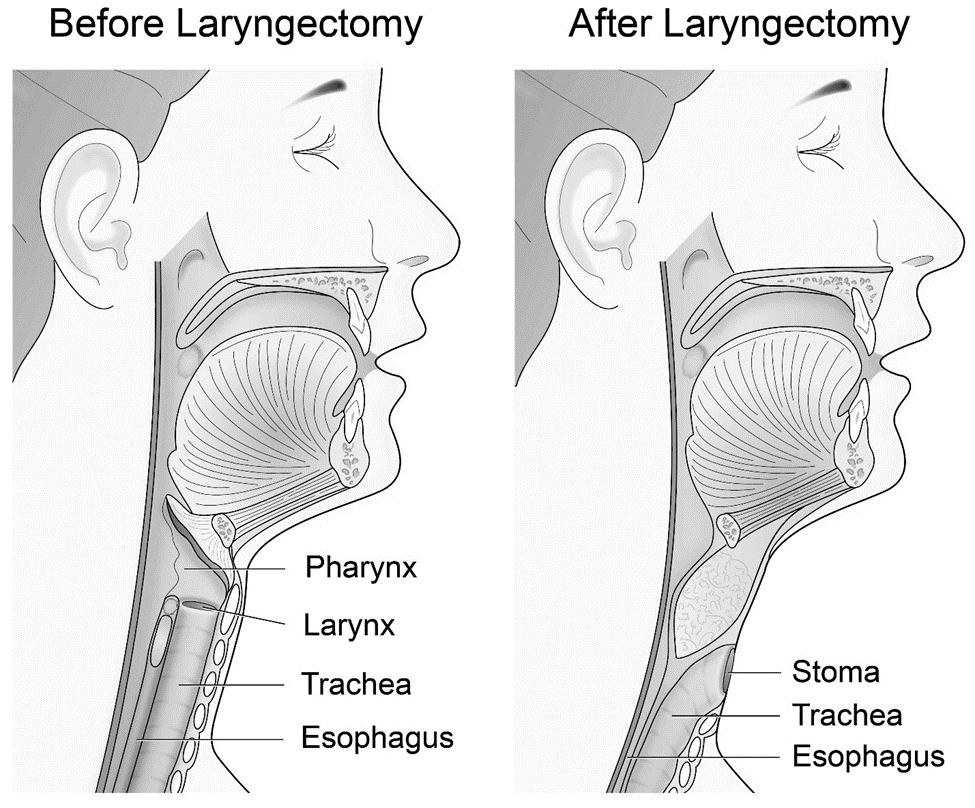A nurse is caring for a client who is in the immediate postoperative period following a partial laryngectomy. Which of the following parameters should the nurse assess first?
Tissue integrity
Pain severity
Airway patency
Wound drainage
The Correct Answer is C
A. Tissue integrity: While assessing tissue integrity is important, ensuring airway patency takes precedence in the immediate postoperative period, especially following a procedure involving the larynx. Maintaining a patent airway is a critical priority.
B. Pain severity: Pain assessment is important, but it is not the primary concern immediately postoperatively in the context of a partial laryngectomy. Airway patency is of higher priority.
C. Airway patency: This is the correct answer. Following a partial laryngectomy, there may be concerns related to airway compromise due to the surgical procedure. The nurse should assess the airway first to ensure there are no obstructions or complications affecting the client's ability to breathe.
D. Wound drainage: While assessing wound drainage is important for monitoring surgical sites, it is not the first priority in the immediate postoperative period following a partial laryngectomy. Airway patency is a more critical concern.

Nursing Test Bank
Naxlex Comprehensive Predictor Exams
Related Questions
Correct Answer is A
Explanation
A. Cabbage: This is the correct answer. Cabbage is a food high in vitamin K, which can antagonize the effects of warfarin. Warfarin is an anticoagulant that works by inhibiting vitamin K-dependent clotting factors. Consistent intake of vitamin K-rich foods, such as cabbage, can affect the stability of the client's international normalized ratio (INR).
B. Green beans: Green beans are not particularly high in vitamin K, and their consumption is not usually restricted for clients taking warfarin.
C. White beans: White beans are not particularly high in vitamin K, and their consumption is not usually restricted for clients taking warfarin.
D. Cantaloupe: Cantaloupe is not high in vitamin K, and its consumption is not usually restricted for clients taking warfarin.
Correct Answer is A
Explanation
A. Smoking cessation: Chronic bronchitis is often associated with smoking and exposure to tobacco smoke. The most effective preventive measure for chronic bronchitis is to quit smoking and avoid exposure to secondhand smoke. Smoking cessation not only prevents chronic bronchitis but also improves overall respiratory health.
B. Regular moderate exercise: While regular exercise is beneficial for overall health, it is not specifically cited as a primary preventive measure for chronic bronchitis. However, exercise can contribute to overall respiratory health and well-being.
C. Maintenance of ideal weight: Maintaining an ideal weight is important for overall health, but it is not identified as a specific preventive measure for chronic bronchitis.
D. Annual influenza immunization: Influenza immunization is important for preventing influenza (flu) and its complications. While individuals with chronic bronchitis may be at increased risk for respiratory infections, annual influenza immunization is not a direct preventive measure for chronic bronchitis itself.
Whether you are a student looking to ace your exams or a practicing nurse seeking to enhance your expertise , our nursing education contents will empower you with the confidence and competence to make a difference in the lives of patients and become a respected leader in the healthcare field.
Visit Naxlex, invest in your future and unlock endless possibilities with our unparalleled nursing education contents today
Report Wrong Answer on the Current Question
Do you disagree with the answer? If yes, what is your expected answer? Explain.
Kindly be descriptive with the issue you are facing.
